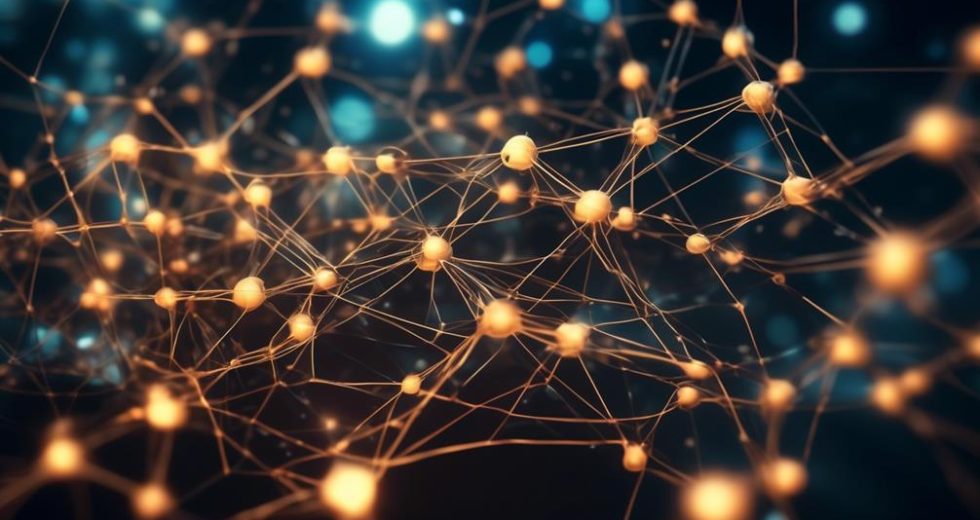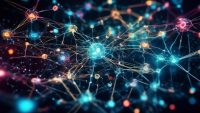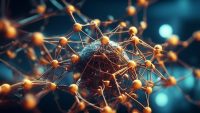Knowledge graphs have revolutionized the field of artificial intelligence and data management, offering a unique approach that combines semantic technology with static machine learning. These graphs have the potential to continuously learn and adapt, making them distinct from traditional machine learning methods.
By seamlessly integrating public resources with private corporate data, knowledge graphs bridge the gap between business expertise and application. Moreover, they act as semantic glue, consolidating information across different systems and enabling efficient situation management.
In this discussion, we will explore the benefits, potential business scenarios, and the future potential of knowledge graphs, revealing why they are hailed as the dream of a knowledge network.
Key Takeaways
- Hybrid AI combines semantic technology (knowledge graphs) and static machine learning, allowing for continuous learning and up-to-date information.
- Knowledge graphs have the potential to combine private corporate data with public data, enabling integration and composition of data models and applications.
- Knowledge graphs act as semantic glue, linking up data silos and consolidating data across different products and systems.
- The Explore Related Situations app, based on a advanced knowledge graph at SAP, helps users navigate related situations and make informed decisions, enabling efficient situation management.
Hybrid AI and Knowledge Graphs
Hybrid AI leverages the power of semantic technology and knowledge graphs to create a dynamic and continuously learning machine learning system.
By integrating machine learning with knowledge graphs, Hybrid AI enables continuous learning and adaptation to new data.
Unlike classical machine learning methods that rely on existing databases, knowledge graphs allow for the addition of new data at any time, ensuring the system stays up-to-date.
This integration of machine learning and knowledge graphs enables the system to continuously learn and improve its performance over time.
However, designing knowledge graphs can be complex and requires semantic accuracy.
Nevertheless, the benefits of this integration are significant, as it allows for the creation of a machine learning system that can learn from new data and adapt its models accordingly, leading to more accurate and effective results.
Decoupling Business Expertise and Application
With the integration of knowledge graphs and semantic technology in Hybrid AI, businesses can now separate their expertise from their applications, allowing for the seamless combination of private corporate data with public data. This decoupling of business expertise and application is made possible through collaborative modeling and public private data integration. Knowledge graphs serve as the bridge between these two realms, enabling the integration and composition of data models and applications. They act as the semantic glue, linking up data silos and consolidating data across different products and data silos. By storing and linking metadata separately from the data in applications' tables, knowledge graphs enable gradual rollout and extension of data models. This approach not only facilitates efficient and effective situation management but also empowers businesses to leverage the full potential of their data assets.
| Collaborative Modeling | Public Private Data Integration | Knowledge Graphs |
|---|---|---|
| Enables teamwork and knowledge sharing among experts | Facilitates the combination of private corporate data with public data | Acts as a bridge between business expertise and applications |
| Enhances the accuracy and completeness of data models | Allows for the seamless integration and composition of data models and applications | Links up data silos and consolidates data across different products and data silos |
| Promotes a more efficient and effective decision-making process | Enables businesses to leverage the full potential of their data assets | Stores and links metadata separately from the data in applications' tables |
| Facilitates the gradual rollout and extension of data models | Provides better search capabilities and contextualized results | Serves as the semantic glue, connecting disparate data sources |
| Supports the development of a more ubiquitous language | Enables the implementation of various scenarios like knowledge and data management, chatbots, and fraud detection | Keeps data models up-to-date and continuously learning |
Semantic Glue – Integration by Design
Knowledge graphs act as a vital component of integration by design, serving as the semantic glue that connects and consolidates data silos. Graphs function as data connectors, enabling the seamless flow of information between various systems and applications.
They excel in scenarios that involve calculating the shortest route or associating specific materials. With their ability to store and link metadata separately from the data in applications' tables, graphs consolidate data across different products and data silos. This semantic interoperability allows for the gradual rollout and extension of data models, providing flexibility and scalability.
The Situation Knowledge Graph
The seamless integration provided by knowledge graphs as the semantic glue extends to the advanced knowledge graph utilized in SAP's Explore Related Situations app. This app, part of the Intelligent Situation Automation service on SAP Business Technology Platform, enables users to navigate related situations and make informed decisions. The knowledge graph serves as the foundation for efficient and effective situation management in SAP S/4HANA.
- The app leverages the knowledge graph to consolidate and organize relevant data for each situation.
- Users can easily explore and understand the relationships between different situations.
- The knowledge graph enables quick access to relevant information, improving the efficiency of situation management.
Benefits of Knowledge Graphs
Knowledge graph technologies offer a multitude of benefits across various domains, revolutionizing the way businesses model scenarios, enhance search capabilities, and improve decision-making processes.
One of the key benefits of knowledge graphs is improved decision-making. By organizing and connecting vast amounts of data, knowledge graphs provide a comprehensive and holistic view of information, enabling businesses to make informed decisions based on accurate and up-to-date insights.
Additionally, knowledge graphs facilitate enhanced data integration by consolidating data from various sources and breaking down data silos. This integration enables businesses to have a unified and coherent understanding of their data, leading to improved efficiency and productivity.
Knowledge Graphs in Business Scenarios
How can knowledge graphs be effectively utilized in various business scenarios to drive innovation and enhance decision-making processes?
- Data integration:
- Knowledge graphs act as a semantic glue, linking up data silos.
- Graphs consolidate data across different products and data silos.
- Graphs enable the integration and composition of data models and applications.
- Data visualization:
- Graphs can store and link metadata separately from the data in applications' tables.
- Graphs excel in scenarios like calculating the shortest route or associating specific materials.
- Knowledge graphs enable better search capabilities and contextualized results.
In business scenarios, knowledge graphs offer the potential to revolutionize data integration and visualization. By acting as a semantic glue, graphs can link disparate data silos, enabling the consolidation of data from different sources. Additionally, graphs allow for the integration and composition of data models and applications, facilitating seamless data integration.
Furthermore, knowledge graphs excel in scenarios that require complex calculations or associations, such as finding the shortest route or identifying specific materials. Finally, knowledge graphs enable improved search capabilities and contextualized results, enhancing decision-making processes in various business scenarios.
Future Potential of Knowledge Graphs
In light of the transformative impact knowledge graphs have demonstrated in business scenarios, their future potential is poised to revolutionize data-driven decision-making processes across industries.
With their ability to integrate and connect vast amounts of data from various sources, knowledge graphs hold promise for emerging applications and improved decision-making.
By consolidating data across different products and data silos, knowledge graphs can provide a comprehensive and contextualized view of information, enabling organizations to make more informed and strategic choices.
Additionally, knowledge graphs facilitate the modeling of complex business scenarios and capture the expertise of business experts through constraints and vocabularies.
As the technology continues to evolve, knowledge graphs are expected to play a pivotal role in driving innovation and enabling organizations to extract valuable insights from their data.
Frequently Asked Questions
How Does Hybrid AI Combine Semantic Technology and Static Machine Learning?
Hybrid AI combines semantic technology and static machine learning to enable advanced data analysis and decision making. By integrating knowledge graphs with existing databases, hybrid AI continuously learns and stays up-to-date, enhancing the efficiency and effectiveness of data-driven processes.
What Is the Advantage of Knowledge Graphs in Terms of Keeping Data Up-To-Date?
Advantages of knowledge graphs in terms of keeping data up to date include real-time updates and automated data integration. This ensures that new data can be added at any time, keeping the knowledge graph current and continuously learning.
How Can Private Corporate Data Be Combined With Public Data Using Knowledge Graphs?
Private corporate data can be combined with public data through knowledge graphs, enabling data integration and enrichment. Knowledge graphs serve as a semantic glue, linking up different sources of information, allowing for a more comprehensive and contextualized understanding of data.
How Do Knowledge Graphs Act as Semantic Glue?
Knowledge graphs act as semantic glue in the knowledge network, linking and consolidating data silos. By storing and linking metadata separately from application data, they enable efficient integration and composition of data models, facilitating better search capabilities and contextualized results.
What Is the Role of Knowledge Graphs in Situation Handling in SAP S/4hana?
Knowledge graphs play a crucial role in situation handling in SAP S/4HANA. They enable efficient and effective management by providing an advanced knowledge graph that aids users in navigating related situations and making informed decisions.
Conclusion
In conclusion, knowledge graphs offer a powerful solution for bridging the gap between business expertise and application. They consolidate data across various systems and enable efficient situation management.
Their ability to continuously learn and adapt, combined with their integration with public resources, makes them a valuable tool in the realm of artificial intelligence and data management.
With their wide range of benefits and future potential, knowledge graphs are poised to revolutionize knowledge and data management in various industries.
As the saying goes, 'Knowledge graphs are the threads that weave a comprehensive tapestry of information, unlocking hidden insights and empowering organizations to make informed decisions.'






